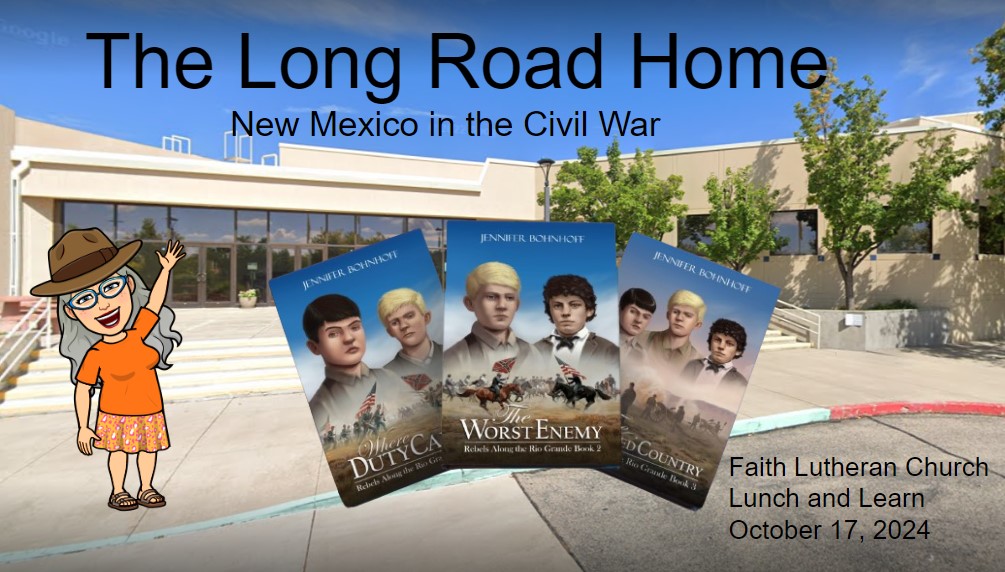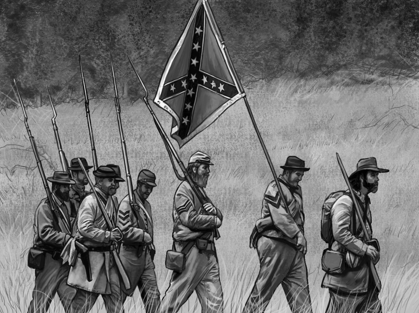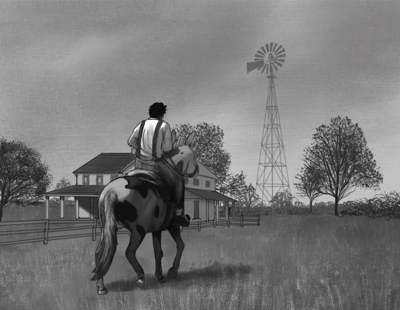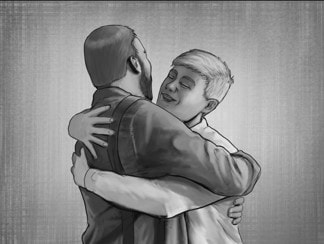Three days ago, The Famished Country, book 3 of Rebels Along the Rio Grande, was published by Kinkajou Press, a division of Artemesia Publishing.

I celebrated this new book, and the end of a decade-long project with a Lunch and Learn event at my church, Faith Lutheran Church in Albuquerque.
Faith has Lunch and Learns monthly. They are a time for people to get together, listen to a speaker, eat a lovely lunch, and spend some time socializing. I've been blessed to be a Lunch and Learn speaker numerous times over the past years.
Yesterday's presentation was entitled The Long Road Home, and it was about the difficult slog of the Confederates once they had their supply wagons burned in Glorieta Pass.
Faith has Lunch and Learns monthly. They are a time for people to get together, listen to a speaker, eat a lovely lunch, and spend some time socializing. I've been blessed to be a Lunch and Learn speaker numerous times over the past years.
Yesterday's presentation was entitled The Long Road Home, and it was about the difficult slog of the Confederates once they had their supply wagons burned in Glorieta Pass.
The Confederate Army was pushing back the Union forces during the Battle of Glorieta. Given another day of battle, they just might have won and been able to push their way forward, through the canyon and on to Fort Union, the best stocked supply depot in the Southwest. If they'd been able to take the fort and all its ammunition, Sibley's Army of New Mexico just might have been able to press on and take the gold fields of Colorado and the deepwater ports of Southern California. All the big dreams of the big-talking H.H.Sibley would have come to fruition, giving the Confederacy a huge boost in resources and in accomplishments. However, as the third day of battle ended, Scurry and Pyron realized that their supply wagons, left undefended back at Johnson's Ranch, had been destroyed. With no supplies, the rebels had no choice but to retreat back to Texas. On their way, the ragged remains of the army passed through Albuquerque, where the men camped, ironically, in a place named La Glorieta. They engaged Canby's forces in a cannonade there and in Peralta, and then, out of bullets and cannon balls, walked around Fort Craig to avoid another battle that they could not possibly win.
Sibley had left San Antonio, Texas in October 1861 with 3,200 men. When he returned to Confederate territory in May, 1862, he had only 1,500 men with him. The rest had been lost to battle, disease, starvation, dehydration, and desertion. Once within Confederate Territory, the army disbanded. It took months for the men to trickle back to their homes. Some of them never made it.
It's been a long road for me as an author. I've been working on Rebels Along the Rio Grande for more than a decade now, and I am pleased that the series is complete. I have followed Jemmy back to his reunion with his father, and he, Raul and Cian are all on to new adventures. The Civil War is over for my three protagonists.
But I am not all the way home yet, and my mission isn't truly complete. Although I have all three books in print, I still need to complete teacher's guides for books 2 and 3, and I hope to get all three books produced as audio books, so that middle graders who have difficulty reading will also be able to learn about the Civil War in New Mexico. I may still have a long ways to go before I can hang my hat on the peg and call it quits.

Jennifer Bohnhoff is a former educator who now devotes her time to writing. Most of her books are historical fiction, and suitable for middle grade through adult readers. You can learn more about her books here, on her website.












No comments:
Post a Comment